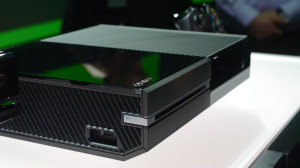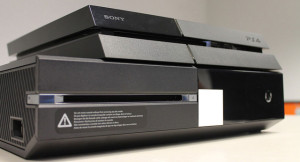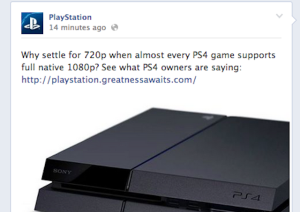Phil Spencer Regrets Microsoft’s Sugar-Coating of DRM Plans
Microsoft’s Phil Spencer has this week expressed regret at the confused messaging used by the company in an effort to sugar-coat their Xbone DRM debacle, in essence sugar-coating a sugar-coating because their messaging was not a sugar-coating at all, but rather flagrant lies. Microsoft attempted to sell the public on their odious always-on DRM requirements by telling grand fibs about how “the power of the cloud” was going to help the Xbone render visuals more impressive than the PS4, and well beyond the capabilities of this remedial VCR mimic itself – Now fast-forward six months and Titanfall cannot even release in South Africa because the performance of Microsoft’s computing cloud is too poor to support online multiplayer.
“I look at last summer and that wasn’t a highpoint for me, coming out of the announcement of Xbox One and E3, where I thought our messaging around what we believed in was confused.
I learned a ton last summer as leader of our groups about being true to your core vision about what a product is, not being confusing, and frankly, when you’re going to say something to a consumer that might put them off, it’s better to just be direct and honest, rather than trying to sugar-coat something that might be controversial.
I’d rather deal with the controversy of what we’re doing, and have an above-table conversation about that topic, rather than trying to sugar-coat it with some other news. And again, my interactions over the last six months, and I really think the interactions of [Xbox chief marketing and strategy officer Yusuf Mehdi] and [Xbox corporate vice president Marc Whitten] and other members of the leadership team – we’re meaning to build on what we learned last summer, and just build on who we are as people.
One of the reasons I wanted to be a little more active socially was because I knew the core of why we were in this industry was not an evil reason, it was to really delight consumers and build a great product that millions and millions of people would love.”
Microsoft has been doing a bang-up job of surprising and delighting the players that they have chased into the higher-spec embrace of Sony’s PS4 – but how might have things been different? Would things have turned out better for this slimy toilet of a company if all of Microsoft’s mouthpieces were as open and honest as, say, Yusef Mehdi was at the time?
“Well, it may not matter so much to Microsoft. Sure, core gamers complain, but the folks who don’t really pay attention and who just want a fancy box will be fine with Microsoft’s Xbox One. In a broader set of community, people don’t pay attention to a lot of the details, we’ve seen it in the research, we’ve seen it in a lot of the data points.”
Oh… It might please Microsoft to suppose that things may have turned out differently regarding their disreputable intentions if they had just been up-front, especially considering that their target market of ignorant consumers was allegedly not even paying attention, only one gets the distinct impression that this was not the case at all. When Microsoft announced their Xbone the whole world was listening, and once they were finished everybody knew about it – core gamers and mundanes alike.
Without the ephemeral candy floss of the cloud acting as window dressing Microsoft would still be left trying to sell a restrictive DRM regime which would aggressively curtail a consumer’s right to do as they please with their own physical purchases. Microsoft’s hamfisted duplicity was good for a few laughs in gaming circles, but even without that the coverage would have been much the same throughout the mainstream media. Microsoft should be thanking their lucky stars that they completely bollocksed the unveiling of their DRM, as it meant that today they still have a box capable of selling half the numbers of what PS4 sells each month. The implication buried deep in Spencer’s words is that if it was not for their confused messaging, Microsoft may well have still been able to go ahead with their DRM plans – and that probably would have done for the Xbone console.
Microsoft Gears Up To Begin Sugar-Coating API Plans
One of the many reasons touted for the poor performance exhibited by Microsoft’s Xbone console has been the lousy state of its software at launch – poor system software, poor developer environment, and poor API. The console’s API woes are about to be remedied if the carry-on of Microsoft’s DirectX 12 Twitter account is to believed – and one had best believe that the Xboning hordes have eaten up this promise hook line and sinker. The Xbone is set to be powered by Direct X 12, a fact that is being celebrated as confirmation that Xbox ports will return to looking better than their Playstation counterparts anon – yet this announcement raises more questions than anything else.
The Xbone is set to become easier to program for – that much is a given, but [since at least DirectX 9] previous revisions have always ushered in new hardware features – features that the Xbone presumably could not possibly support. Both the Xbone and PS4 share the same GPU architecture which supports the DirectX 11.1 instruction set; this begs the question of how the Xbone could possibly benefit from being made to run DirectX12 as opposed to DirectX 11.1. It is entirely possible that Microsoft is using DirectX12 because of slight benefits to efficiency that DirectX 11.1 lacks, while planning to lock any additional hardware features which the Xbone is incapable of performing. On the other hand, if that were the case then it begs the question of why Microsoft never did the same for their Xbox 360 console as Windows made the transition to DirectX 10 and then DirectX 11. Alternately, DirectX 12 may offer no new features beyond those which can be implemented through software alone rather than hardware. Essentially, this could simply be the API Microsoft were working on for the Xbone, which they have subsequently decided to port across to the PC and designate as DirectX for marketing purposes. This seems to be the most likely explanation for the move, and it is also the most disappointing for PC gamers given that it will not lead to a generational shift in terms of the feature-set that Nvidia and AMD cards offer.
It also stands to be said that this does not appear to be much of a game-changer in the Xbone’s performance struggles against the PS4, other than to narrow the gulf created by the Xbone’s undercooked launch API. Sony has never had access to DirectX software for their past consoles, and took to reverse engineering the API for use with their PS3 system. In the unlikely event that DirectX 12 actually adds new features through software, it is no stretch of the imagination to suppose that Sony technicians will be able to quickly reverse engineer the new instruction-set for use with the PS4 – after all, only one of these companies was capable of authoring an API which fired on all cylinders at launch. It is unlikely that we will see any secret source for hopeful Xboners.
Naughty Dog Sheds Light On PS4’s Developer Available Resources
The sad reality of console gaming is that owing to faddish implementations of multimedia capabilities such as apps, voice chat, and gameplay streaming, the official specifications of one’s console never ever tells the full story of precisely how much juice is available to developers. The run up to the launch of the PS4 saw much in the way of speculation as to how much of the PS4’s precious processing and memory resources would be taken up by a bloated multi-media friendly operating system. Digital Foundry’s Richard Leadbetter claimed to have insider confirmation that developers only had access to 4.5gb of RAM, and was subsequently castigated by multiple PS4 developers for being wrong, leading most to assume that significantly more memory was available for games. Leadbetter may have been wrong, but it would seem that he was only wrong by 500mb, as Naughty Dog has this week confirmed that the PS4 matches the Xbone in only allowing developers access to five of the system’s eight gigabytes of RAM.
According to Naughty Dog they have already been shocked at how quickly the 5gb of available RAM tends to fill up, and have developed their own propriety software aimed at mitigating memory fragmentation:
“Even in the PlayStation 4 you have 5 gigs, which seems like a lot but you’ll be amazed by how quickly it fills up.”
So much for all the people who claimed that 8gb was overkill, it seems that if you provide a resource then developers will use it. It makes one wonder how things would have turned out if Sony had been forced to go with the PS4’s initially planned 4gb of memory.
In addition to memory allocation, Naughty Dog has also this week revealed the CPU access that developers will have to power their games. Like with memory, it was widely assumed that the PS4 offered considerably more juice to developers than Xbone, owing to the fact that the system has less of a media focus and does not have to power Kinect. The reality is that Sony once again matches Microsoft by only allowing developers to access six out of the PS4’s eight CPU cores – begging the question of what that extra CPU core is being used for. It would be a sadness if developers were being deprived of an entire CPU core and 1gb of RAM in order to run Sony’s heavily rumoured and [likely] dead on arrival VR headset. Thus the PS4 has access to the same number of CPU cores as the Xbone, yet the PS4’s available CPU resources do not run a dead heat with those of the Xbone, or at least not in theory. This week it was revealed by Sony UK that the PS4’s CPU is clocked at 1.6ghz, which is 150mhz slower per core than its Xbone counterpart. Given that the CPU architecture of the PS4 and Xbone is identical, this difference in clock speed should be a real performance gain for the Xbone. This fact throws up something of a mystery though, as back in December Allegorithmic benchmarked both console CPUs using their Substance Engine. This benchmark saw Sony’s PS4 decompress 14mb of textures per second to the Xbone’s 12mb of textures per second – this is a feat that should not have been possible given the PS4’s CPU disadvantage. Then again, perhaps Sony have implemented some sort of turbo overclocking mode like Intel do with their CPUs, though to speculate much further on this possibility would be to chase after secret sauce, which is seldom flattering to one’s faculties.


